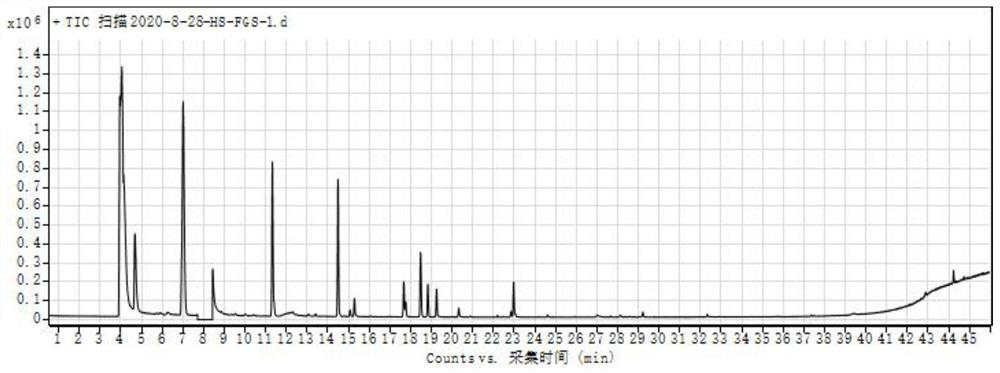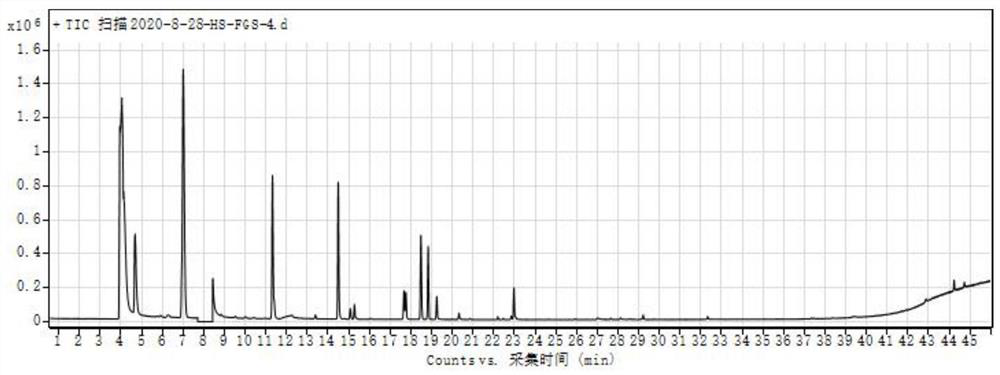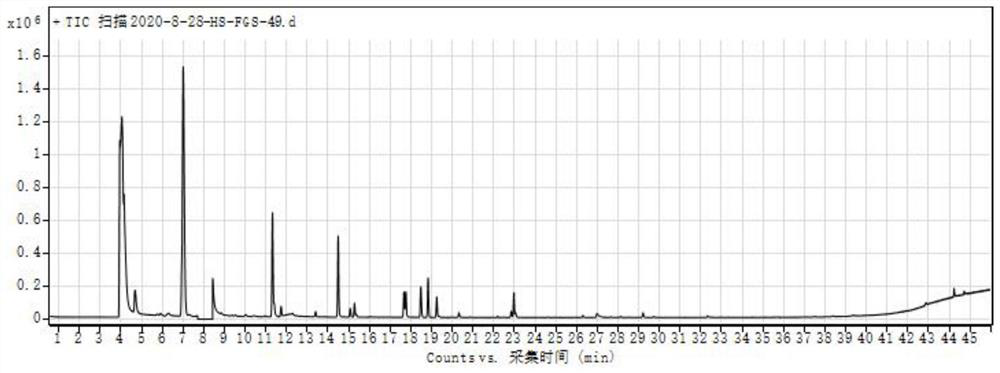Quantitative detection method of volatile flavor compounds in fermented grains
A quantitative detection method and technology of flavor substances, which are applied in the field of flavor analysis of fermented grains, can solve the problems of competitive adsorption of flavor substances, small adsorption capacity, and easy saturation of extraction heads, etc., achieve good linear relationship and improve quality
- Summary
- Abstract
- Description
- Claims
- Application Information
AI Technical Summary
Problems solved by technology
Method used
Image
Examples
Embodiment 1
[0045] The determination of the content of volatile flavor substances in liquor grains in the fermentation process of embodiment 1
[0046] 1. Draw a standard curve
[0047] (1) Preparation of simulated fermented grains
[0048] First, the bran husk and Wuliang powder (sorghum 36%, rice 22%, glutinous rice 18%, wheat 16%, corn 8%, mixed according to the above weight ratio and then pulverized) were soaked in methanol ultrasonically for 30 minutes respectively, and the methanol was poured out. Dry the bran shell and Wuliang powder for later use. Add 250g of bran husk, 150g of Wuliang powder and 600g of ultrapure water into a beaker, mix well, put it into a sterilizing pot at 115°C for 10min, and then wait for the temperature to drop to room temperature, then add 600g of distilled water, 40mL of ethanol and 36g of lactic acid, and mix. Set aside.
[0049] (2) Preparation of mixed standards
[0050] The standard products of 12 volatile flavor substances (see Table 1 for specif...
Embodiment 2
[0073] Embodiment 2 Determination of the content of volatile flavor substances in the fermented grains of white wine out of the cellar
[0074] There are 2 pits for Luzhou-flavor liquor and one for Maotai-flavor liquor, and each pit takes one upper and lower grains. Accurately weigh 5.0-25.0g of each grains into a 250mL conical flask, add 200-500μL of stable isotope mixed internal standard (the concentration of each substance is 1000mg / L), add 100mL of 10% ethanol aqueous solution, and cover the bottle Put the shaker behind the lid, extract at room temperature for 20 min at 180 rpm, filter with a disposable filter (0.2 um, nylon membrane) for later use. The extraction liquid of the liquor grains from the cellar was tested, and the detection conditions were the same as those in Example 1, and the response values of the volatile flavor compounds in the cellar grains were obtained respectively. According to the response ratio of the compound in the sample and the corresponding...
Embodiment 3
[0079] Example 3 Recovery and Precision Measurement
[0080] In order to verify the reliability of the quantitative detection results, the recovery and precision were measured.
[0081] 1. Determination of recovery rate
[0082] The Luzhou-flavored fermented grains (prepared in Example 1) with a fermentation period of 30 days were selected as samples for measurement, and the content of volatile flavor compounds was quantified (repeated 3 times). Two different concentrations of standard mixtures were added to 25 g of fermented grains, respectively, and the two spiked samples were measured (repeated 3 times). The recovery rate was calculated by the following formula: recovery rate of standard addition=(measured value of added standard sample−measured value of sample)÷spiked amount×100%. See Table 5 for details.
[0083] Table 5 The recovery rate of the quantitative method of volatile flavor compounds in liquor grains
[0084]
[0085]
[0086] 2. Determination of preci...
PUM
 Login to View More
Login to View More Abstract
Description
Claims
Application Information
 Login to View More
Login to View More - R&D
- Intellectual Property
- Life Sciences
- Materials
- Tech Scout
- Unparalleled Data Quality
- Higher Quality Content
- 60% Fewer Hallucinations
Browse by: Latest US Patents, China's latest patents, Technical Efficacy Thesaurus, Application Domain, Technology Topic, Popular Technical Reports.
© 2025 PatSnap. All rights reserved.Legal|Privacy policy|Modern Slavery Act Transparency Statement|Sitemap|About US| Contact US: help@patsnap.com



